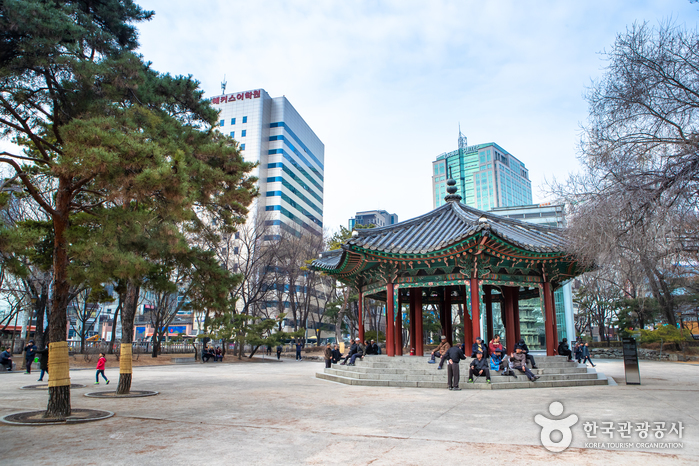Discover Tapgol Park, Seoul’s Historic Recreational Site
Welcome to Tapgol Park, a designated Historic Site and one of the must-visit attractions in Seoul, South Korea. Located in the heart of the city, this park holds significant historical and cultural importance. Let’s explore the fascinating history and beautiful landmarks that await you in Tapgol Park.
A Glimpse Into the Past
Tapgol Park stands on the grounds of the former Wongaksa Temple, which was built during the reign of Joseon King Sejo in the 13th year. Although the temple no longer exists, the site was transformed into a park in 1897, thanks to the visionary proposal by Englishman John Mcleavy Brown, an advisor to King Gojong. This makes Tapgol Park the first modern park to be established in Seoul.
Symbol of Independence
Tapgol Park holds great significance in South Korea’s history as it played a crucial role in the March 1 Independence Movement in Seoul. Originally known as Pagoda Park, it was later renamed Tapgol Park on May 28, 1992. This park encapsulates the spirit of freedom and resistance against colonial rule.
Monuments and Heritage
As you explore Tapgol Park, you’ll come across several remarkable monuments and heritages that showcase the rich cultural heritage of South Korea. One of the standout landmarks is the Ten-story Stone Pagoda of Wongaksa Temple Site, a designated National Treasure. This ancient pagoda is a true marvel, offering a glimpse into the architectural prowess of the past.
Another notable highlight is the Stele for the Construction of Daewongaksa Temple at Wongaksa Temple Site, recognized as a Treasure. This stele holds historical significance and provides insights into the religious practices of the time.
Palgakjeong Pavilion is another must-visit spot in Tapgol Park. It is here that the Independence Proclamation was first declared, marking a pivotal moment in South Korea’s fight for independence. Take a moment to soak in the historical significance of this pavilion as you explore the park.
Additionally, don’t miss the independence movement relief plate and the statue of Son Byeong-hee, both of which pay tribute to those who bravely fought for freedom.
Enjoying the Park
Tapgol Park is not only a historical treasure but also a peaceful oasis amidst the bustling city. Take a leisurely stroll through the park, admiring the beautiful trees and well-maintained gardens. Find a bench to sit on and enjoy a moment of tranquility away from the urban chaos.
The park also hosts various cultural events and performances throughout the year, providing visitors with a chance to experience South Korea’s vibrant traditions and entertainment.
Getting There
To reach Tapgol Park, you can take public transportation such as the subway or bus. The park is conveniently located near Jongno 3(sam)-ga Station on Line 1, Line 3, and Line 5. From the station, it’s just a short walk to the park’s entrance.
Plan your visit to Tapgol Park and immerse yourself in the history, culture, and natural beauty that this iconic Seoul attraction has to offer. It’s a must-see for history buffs, culture enthusiasts, and anyone seeking a peaceful retreat in the heart of the city.

